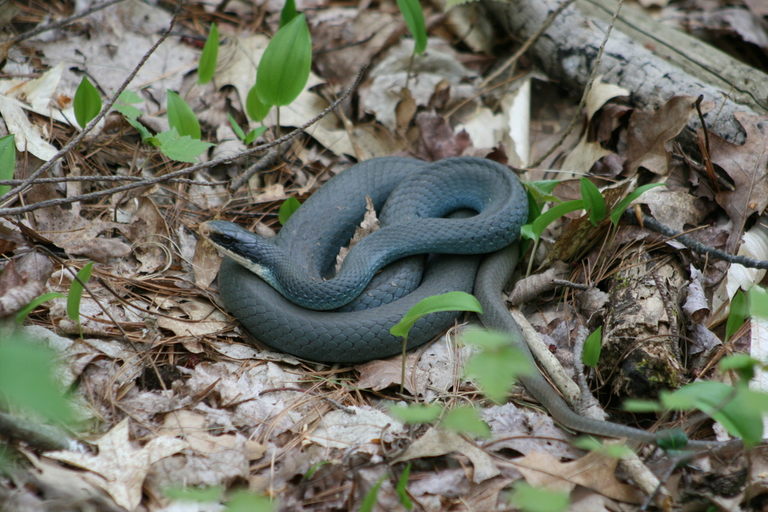
The Blue Racer (Coluber constrictor foxii) is a subspecies of the North American Racer (Coluber constrictor). While the North American Racer's geographic range stretches across the entirety of the continental United States as well as North to British Columbia, Canada and as far South as central Mexico, the Blue Racer subspecies is restricted to the Great Lakes region.
North American Racer Known Geographic Range Map

(Image Source:https://www.inaturalist.org/taxa/27137-Coluber-constrictor)
Blue Racer Known Geographic Range Map
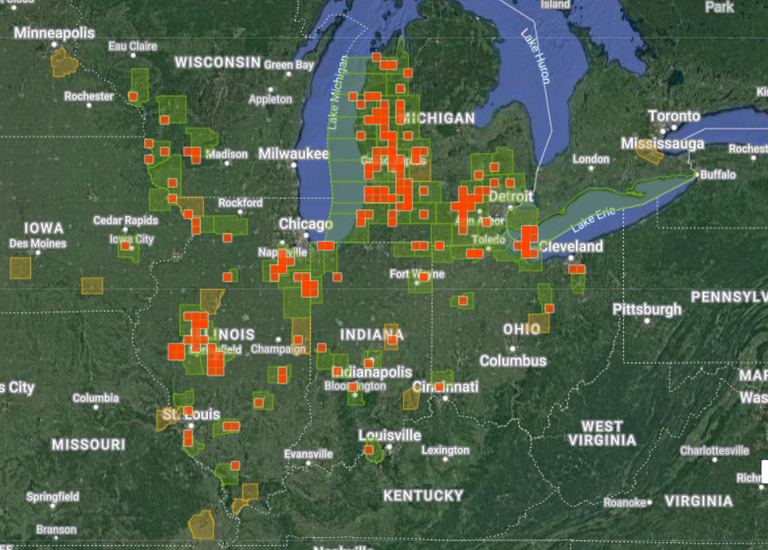
(Image Source: https://www.inaturalist.org/taxa/27146-Coluber-constrictor-foxii)
Like other North American Racers, the Blue Racer is a nonvenomous colubrid snake species that relies on semi-open, savanna-like habitats. Like the name would suggest, Blue Racer's are a quick-moving and highly mobile snake species that is most active during the daytime.
As juveniles, their diets consists largely of insects, but as they mature, their diet transitions to rodents, frogs, birds, and smaller snakes. When hunting, the Blue Racer will lift its head off on the forest floor and move rapidly through the understory to find prey. While they typically hunt in understory and savanna environments, they have also been know to climb trees to forage for food. Despite their Latin binomial name, this species does not constrict its prey prior to consuming it.
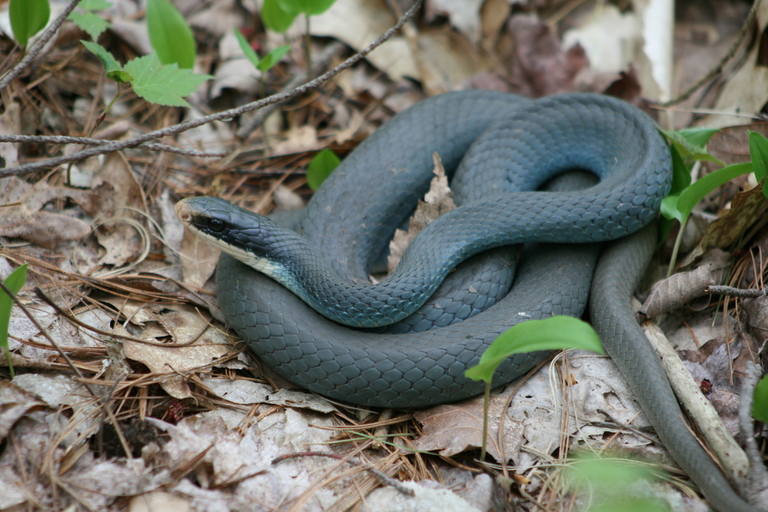
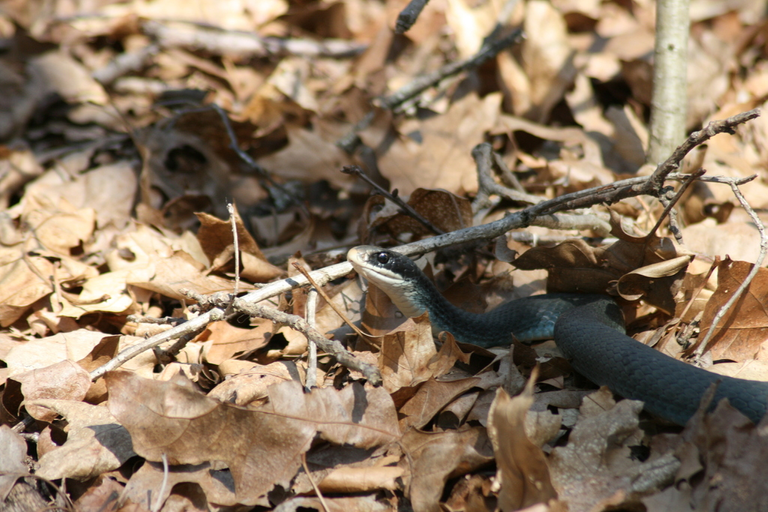

Mature Blue Racers typically exhibit bright, creamy-white ventral scales, dull grey to bright blue ventral scales, dark, blue-grey dorsal scales, large eyes, and a brownish-orange snout. They are among the largest snake species native to the Great Lakes region and can grow to around 90-150 cm in length when fully mature.
Blue Racers tend to be fairly intolerant to human activity and are often among the first reptile species to disappear from urbanizing regions. This intolerance to humans combined with their relatively small geographic range puts them at risk for long-term population decline. Thankfully, a large portion of their native range is federally protected in the United States in the form of the Huron-Manistee National Forests that span across the northern portion of the lower Michigan peninsula. When encountered in the wild, Blue Racer's will commonly attempt to escape humans by hiding under fallen debris or climbing small shrubs and trees. As an additional deterrent, Blue Racers may also vibrate the ends of their tails rapidly. When vibrated against dry leaves, the resulting sound is reminiscent of that of a rattlesnake. Despite not possessing an venom themselves, this mimicry of a much more dangerous rattlesnake species may be an effective deterrent for other local wildlife.
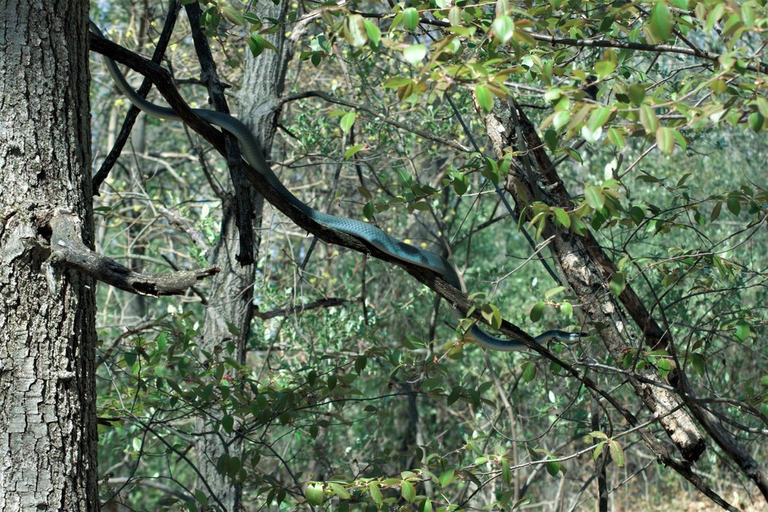

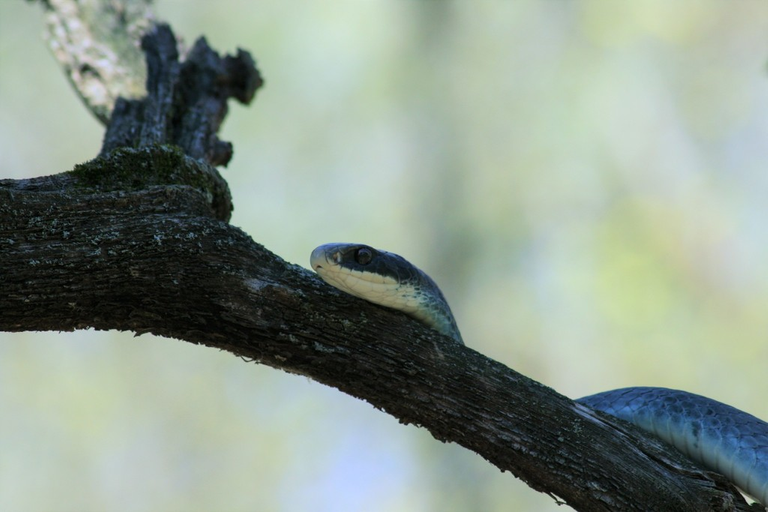
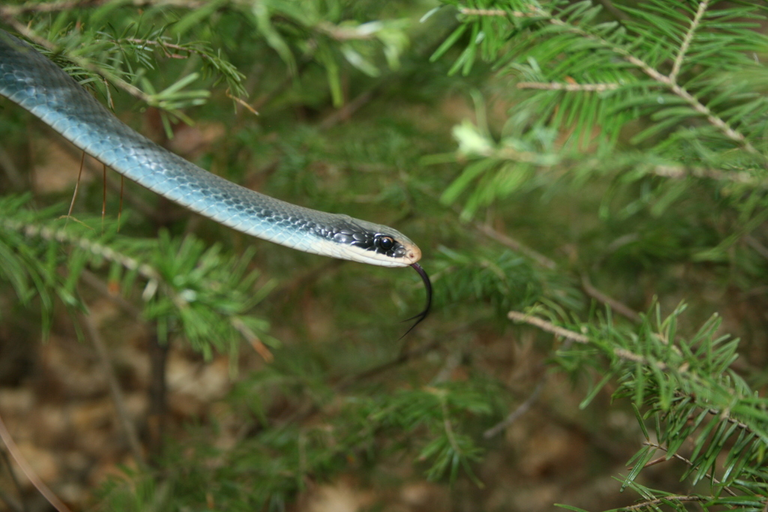
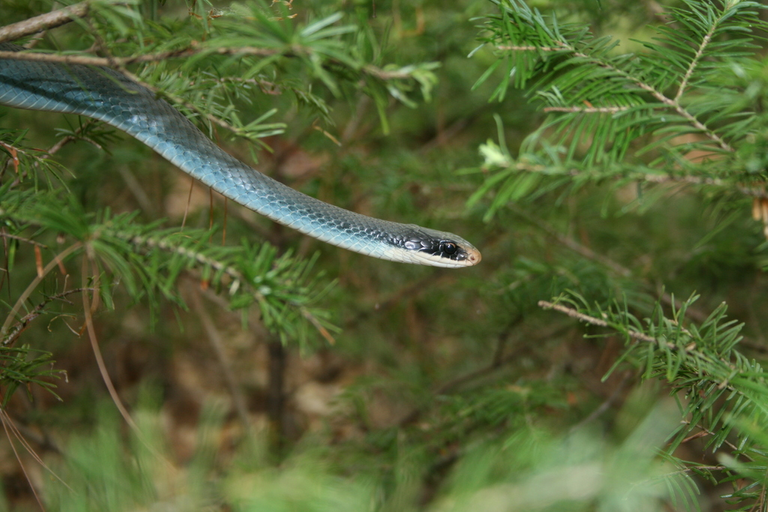


Although their conservation status has not been formally assessed by the IUCN, it is a fair assumption that the wild Blue Racer population has been declining over the previous decades as a result of increased habitat fragmentation and human interference. In the United States, the Huron-Manistee National Forests will likely provide a relatively long-term stable habitat for the species. However, in Canada, the species' geographic range has been restricted to Pelee Island, Ontario. As a result, the Blue Racer is considered to be an endangered species in Canada.
The next time you happen to be walking through the woods, savannas, or wetlands of the Great Lakes region, keep an eye out for this beautiful and elusive snake species.
References:
https://www.natureconservancy.ca/en/what-we-do/resource-centre/featured-species/reptiles-and-amphibians/blue-racer.html
https://en.wikipedia.org/wiki/Coluber_constrictor_foxii
https://snake-facts.weebly.com/blue-racer.html
https://www.discoverwildlife.com/animal-facts/reptiles/facts-about-blue-racer-snakes/
We appreciate your work and your post has been manually curated by zoology team (oscurity,nelinoeva) on behalf of Amazing Nature Community. Keep up the good work!
very good scientific contribution
We appreciate your work and your post was manually curated by @none! from the DNA team!
Reach us on Discord to learn more about the project!
Attractive looking snake, you captured some incredible photography of it on the move. Appreciate the snakes for keeping nature in balance whether or not they are poisonous.
!LUV
@joanstewart(4/10) gave you LUV. H-E tools | discord | community | <>< daily
H-E tools | discord | community | <>< daily